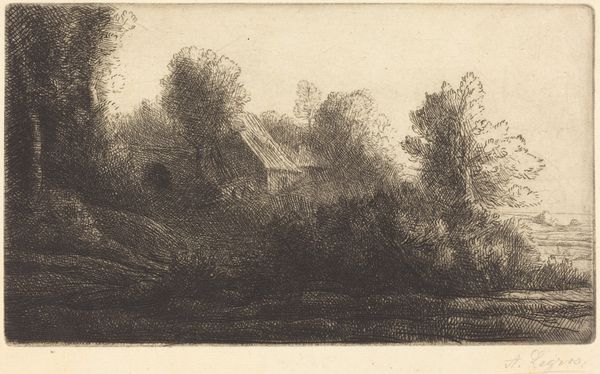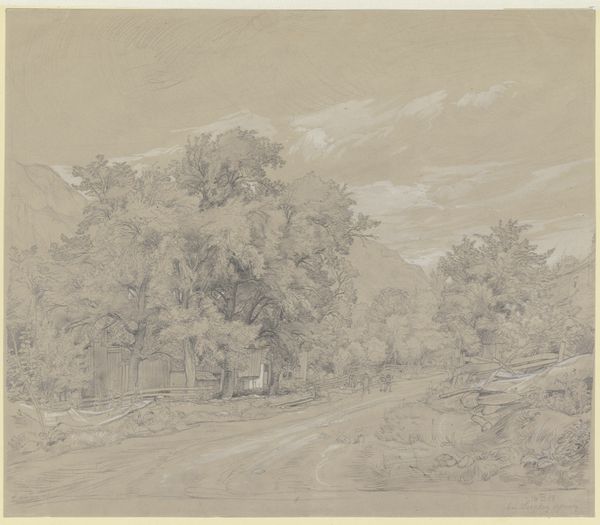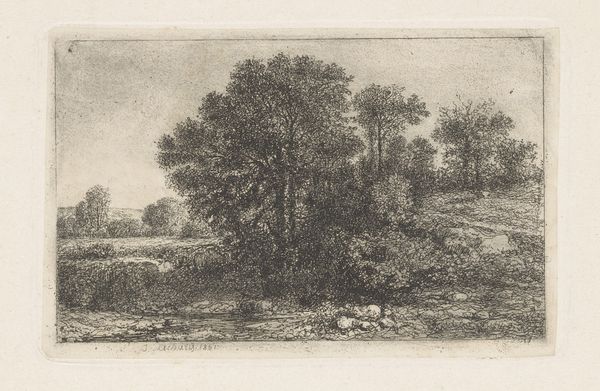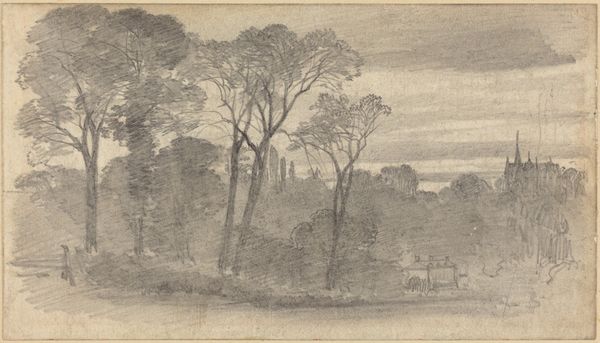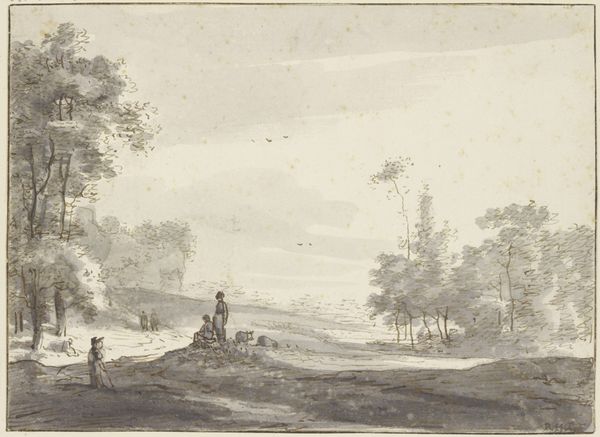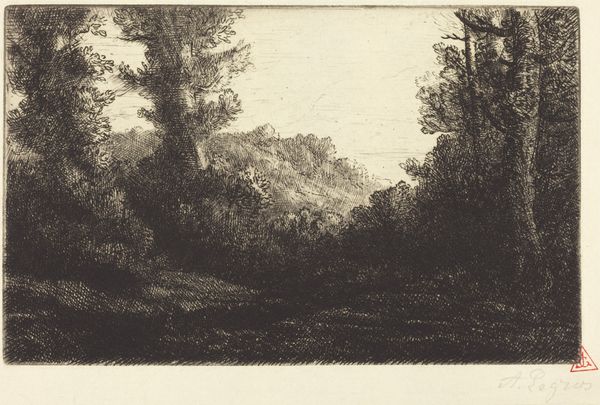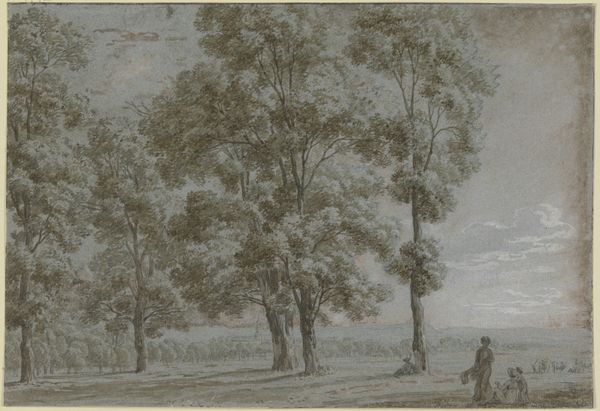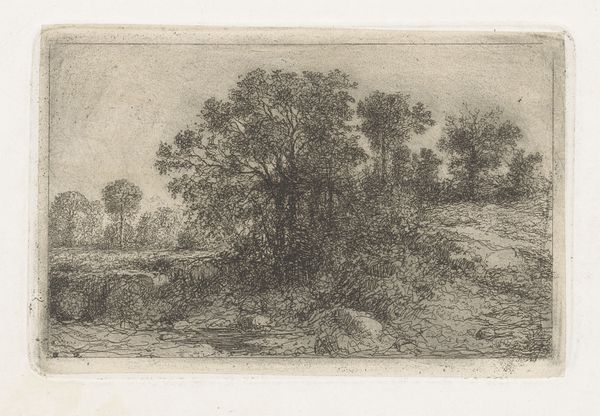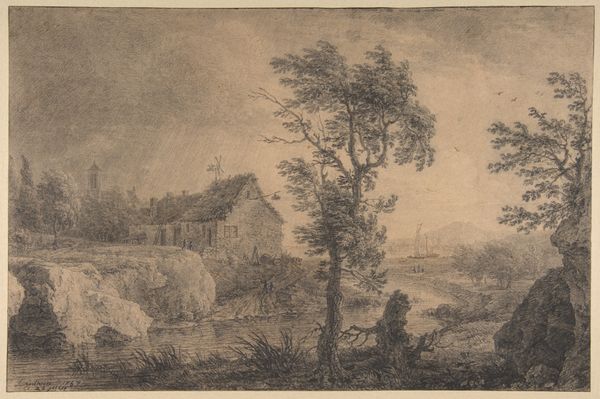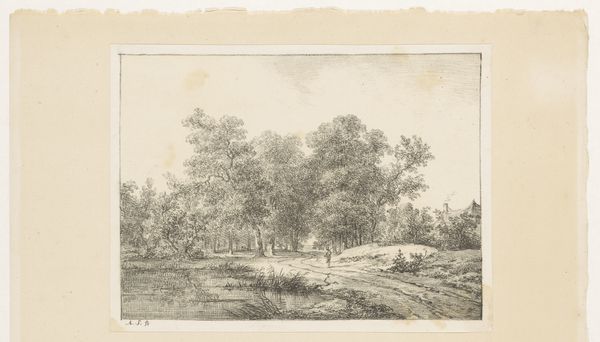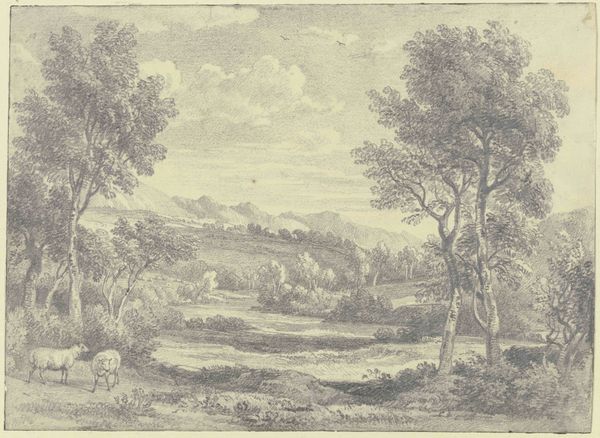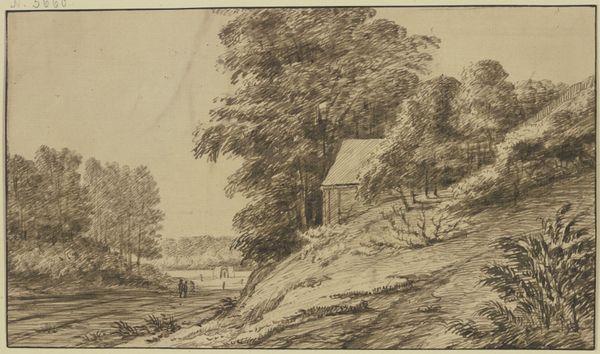
Copyright: Public Domain
Editor: Here we have Jakob Maurer’s "Landscape in the Taunus" from 1879. It’s rendered in pencil and charcoal and feels almost dreamlike to me with all the blended tones. What do you see in this piece? Curator: The heavy reliance on charcoal and pencil, mass-produced and readily available, democratizes the artistic process. This isn’t about rare pigments; it’s about accessible materials allowing for broader participation in landscape representation. Notice how the blending isn't just for aesthetics, it practically obscures the labor invested, softening the view and obscuring harsh realities. Editor: So, the focus on accessible materials speaks to a shift in art production itself? Curator: Precisely. How does this emphasis on the physical act of drawing, using such common tools, affect our understanding of nature depicted here? Is this romantic vision a true representation of the Taunus, or a product filtered through the tools and the artist’s social lens? Consider where Maurer sourced his pencils and charcoal. Who was manufacturing them and under what conditions? Editor: I hadn't considered that. Thinking about the labour involved in the production of the materials makes me consider my own position as a consumer of images, perhaps softening the stark realities involved. Curator: Exactly. By examining these aspects, we move beyond mere aesthetic appreciation. What does landscape mean in this industrialized context? What is its use and who owns the view? Editor: I now have a new awareness. Thank you! Curator: A pleasure. Remember, art is inextricably linked to its production, and that always has an impact.
Comments
No comments
Be the first to comment and join the conversation on the ultimate creative platform.
